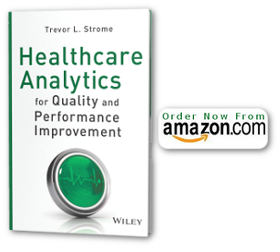Most healthcare organizations (HCOs) possess some degree of business intelligence or analytics capability. In typical HCOs, this capability likely consists of data from source systems being stored in an enterprise data warehouse (EDW) or other storage repository; and analytics, Business Intelligence, and reporting is provided by one or more special-purpose tools.
This arrangement offers little, if any, benefit by way of analytics to healthcare providers working on the front lines.
In a recent article on SearchHealthIt.com, I discuss the potential benefits and challenges of embedding analytics directly into clinical systems such as Electronic Medical Records (EMRs). Although by no means widespread, the technology is advancing, however, to the point where it is becoming feasible to embed more analytics real-time in the clinical systems that clinicians are already using at the point of care.
Embedded analytics will enable the rapid integration of multiple sources and large volumes of data, and do so in such a way that is integrated into existing workflows, thereby not disrupting the process of clinical decision making and caring for patients. Although there are definite tangible benefits of embedded analytics within clinical applications, there are challenges (both technical and otherwise) that are preventing the widespread use of embedded analytics in HIT.
For more information about the challenges and benefits of embedded healthcare analytics, please read the article on SearchHealthIt.com. Future blog posts will profile companies that have developed tools that are “best of breed” in the implementation of embedded healthcare analytics.

{ 0 comments… add one now }